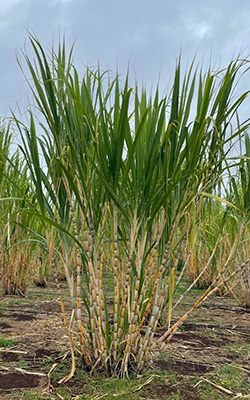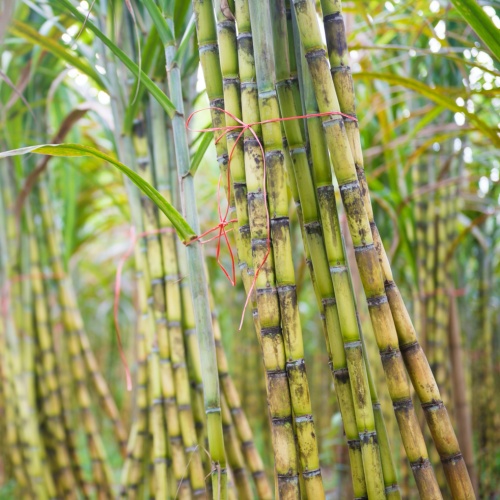The Healthier Alternatives to Sugar and Cane for Natural Sweetness
The Healthier Alternatives to Sugar and Cane for Natural Sweetness
Blog Article
Why Walking Cane Sugar Processing Chemicals Are Vital for Modern Sugar Refining
The function of walking cane sugar handling chemicals in modern-day sugar refining can not be overemphasized, as they are essential to improving both the performance of extraction and the total top quality of the last item. Representatives such as phosphoric acid and certain flocculants are used to remove impurities, resulting in sugar that not just meets consumer expectations yet likewise adheres to sector standards.
Duty of Processing Chemicals
The efficiency of cane sugar handling pivots substantially on the critical application of processing chemicals. These chemicals play a pivotal role in improving the performance and top quality of sugar extraction and refining. From the first phases of juice removal to the final filtration actions, handling chemicals help with different important procedures.
In the removal stage, chemicals such as phosphoric acid and calcium hydroxide are utilized to optimize the clarification process, helping to get rid of contaminations and put on hold solids from the walking stick juice. This not just improves the yield yet additionally ensures the clarity of the last item. Furthermore, agents like flocculants aid in the quick settling of contaminations, therefore streamlining the general process.
Activated carbon and ion exchange materials serve to remove color and smell, ensuring that the refined sugar fulfills consumer high quality requirements. Thus, the careful option and application of these chemicals are vital for accomplishing ideal outcomes in walking stick sugar handling.
Trick Sorts Of Chemicals
Walking cane sugar processing depends on a selection of crucial chemicals that assist in each phase of manufacturing. These chemicals play necessary roles in clearing up, whitening, and cleansing the sugar extracted from walking stick.
One main group of chemicals consists of flocculants, such as polyacrylamide, which help in the clarification process by promoting the aggregation and settling of pollutants. Furthermore, calcium hydroxide is usually utilized to neutralize acidity and assist in the removal of non-sugar elements.
Whitening agents, such as triggered carbon and sulfur dioxide, are used to decolorize the syrup, resulting in a more clear end product. These chemicals assist get rid of color substances that may impact the sugar's appearance and marketability.
Moreover, phosphoric acid functions as a pH regulatory authority during the processing phases, making sure optimum problems for the enzymatic activities involved in sugar extraction and purification.
Other important agents consist of edta (ethylenediaminetetraacetic acid), which chelates steel ions that could militarize undesirable responses, and salt hydroxide, which helps in pH control throughout the refining process. Jointly, these chemicals enhance efficiency and guarantee a high-grade walking cane sugar product.
Advantages for Sugar Quality
Often ignored, the use of specific processing chemicals substantially enhances the total quality of walking stick sugar. These chemicals play a pivotal function in refining processes, making sure that the end product fulfills strict market requirements for purity and taste.

In addition, refining chemicals assist in accomplishing a constant granulation and structure, which are essential for consumer acceptance. By regulating the condensation process, these chemicals guarantee that the sugar crystals create uniformly, leading to an extra enticing product that dissolves well in different applications.
Additionally, making use of these chemicals find out this here can improve the life span of walking cane sugar by decreasing dampness absorption and microbial development. Generally, the tactical application of processing chemicals is crucial for providing top quality walking stick sugar that satisfies consumer assumptions and market demands.
Ecological Influence Factors To Consider

In addition, the energy-intensive nature of sugar refining, compounded by chemical use, frequently leads to boosted carbon discharges. This adds to environment adjustment and elevates problems regarding the sustainability of current refining practices. In addition, the sourcing of these chemicals might involve techniques that intimidate biodiversity, such as monoculture farming, which minimizes the durability of agricultural ecological communities.

To minimize these impacts, sugar refiners are increasingly discovering lasting options and adopting best practices that minimize chemical use. Carrying out extensive environmental management systems can help make certain that the refining procedure lines up with environmental criteria and advertises biodiversity. Eventually, a balanced strategy that focuses on both sugar quality and ecological stewardship is essential for the lasting practicality of the sugar market.
Future Trends in Refining
As the sugar sector faces the ecological challenges linked with standard refining methods, ingenious techniques are emerging to boost both efficiency and sustainability. One substantial trend is the fostering of eco-friendly chemistry principles, which focus on the use of safe, biodegradable processing chemicals. This change not only decreases environmental influence but likewise addresses consumer demand for cleaner manufacturing methods.
An additional promising growth is the application of innovative filtration innovations, such as membrane layer separation and adsorption processes. These methods boost the clarity and high quality of the sugar while lowering the volume of wastewater created during refining. Additionally, the integration of electronic technologies, including IoT and AI, is transforming operational efficiency by allowing real-time surveillance and predictive maintenance, therefore minimizing source waste.
Furthermore, the usage of byproducts click this site from sugar refining, such as bagasse and molasses, is gaining traction. These materials can be exchanged biofuels or value-added products, adding to a round economic situation within the industry. Jointly, these trends signal a shift towards more sustainable practices that not only improve functional effectiveness yet additionally line up with international sustainability objectives, ensuring the future viability of sugar refining.
Conclusion
Cane sugar processing chemicals are necessary in modern-day sugar refining, significantly enhancing the efficiency and top quality of sugar removal. The strategic use of these chemicals not only boosts the pureness and flavor of the last product but additionally ensures consistent crystallization and structure. As the sector significantly prioritizes sustainability, the fostering of environmentally-friendly handling agents is most likely to form future trends in refining, inevitably leading to better items and prolonged service life for consumers.

Inevitably, a balanced strategy that prioritizes both sugar top quality and ecological stewardship is essential for the long-lasting practicality of the sugar industry.
Walking cane sugar processing chemicals are vital in modern-day sugar refining, significantly improving the effectiveness and top quality of sugar extraction.
Report this page